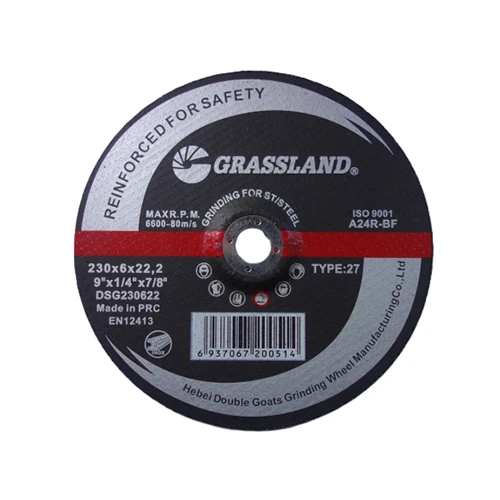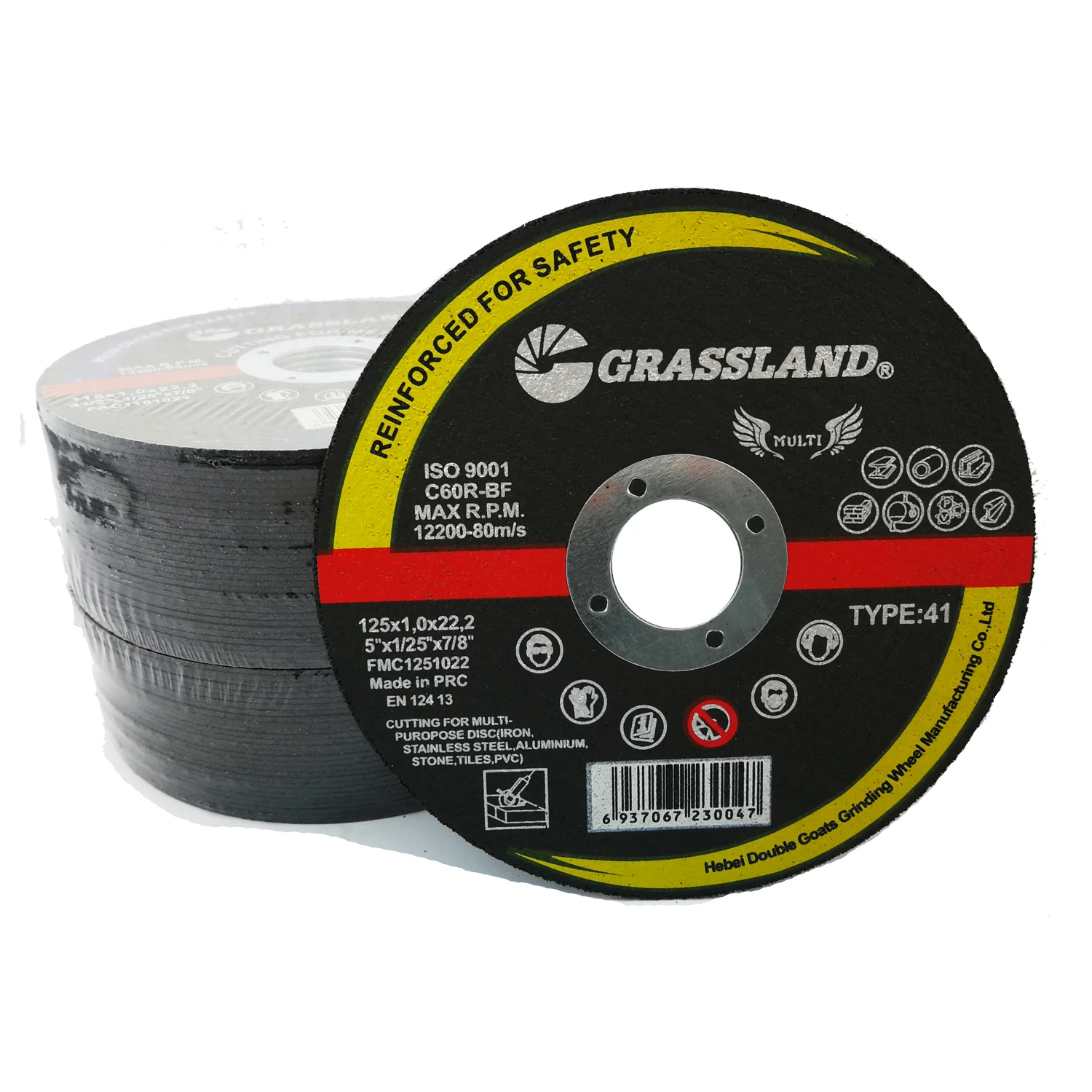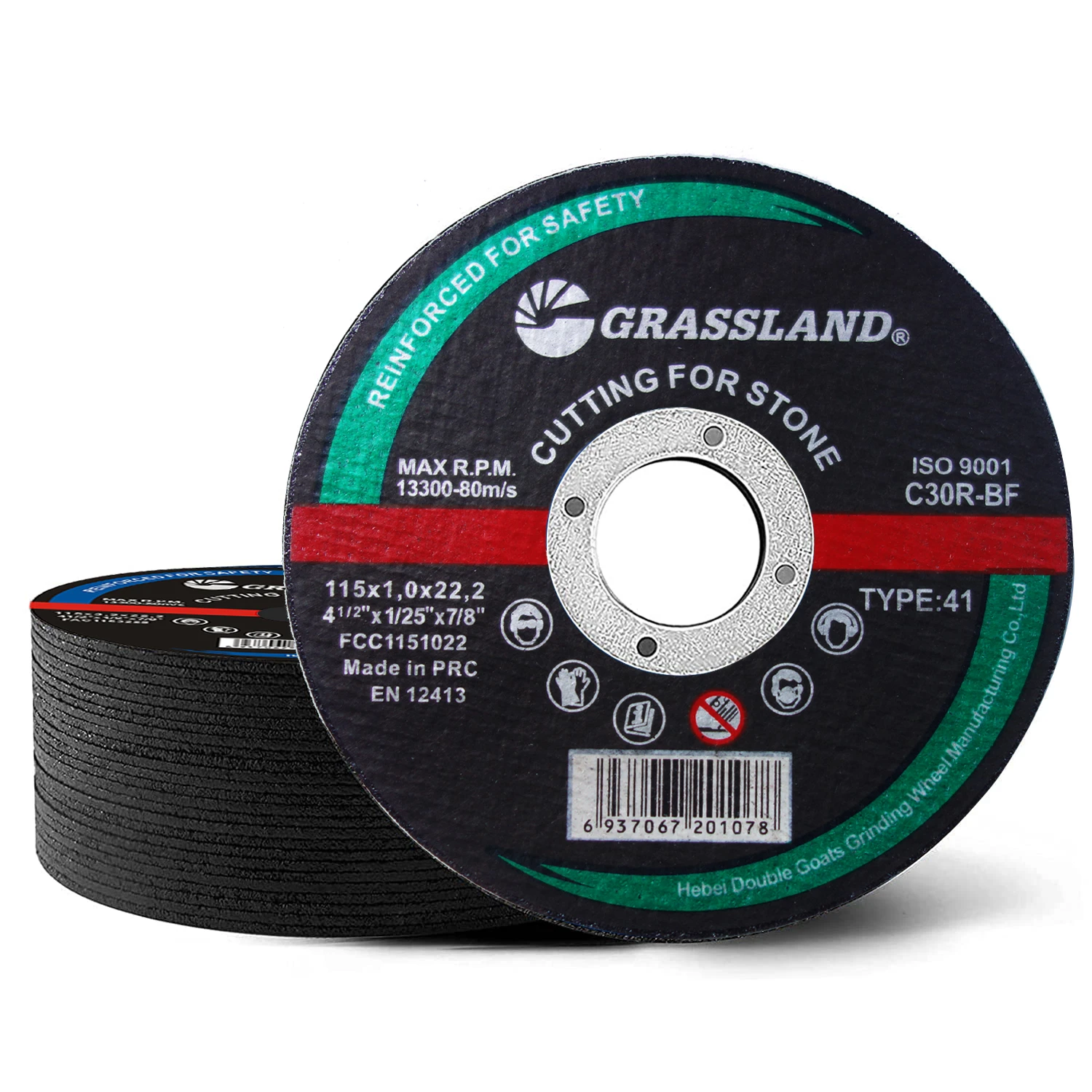Hands-on Notes: Silicon Carbide Flap Wheels That Actually Hold Up on Stone and Glass
If you work granite, engineered stone, or even tough ceramic, you’ve probably learned the hard way that not every flap disc is built for brittle, high-SiO2 materials. This is where a silicon carbide flap wheel earns its keep. Silicon carbide’s sharp, friable grain keeps cutting instead of glazing, which, to be honest, is half the battle on polished edges. Below is a quick field report and some technical detail on Grassland’s 4.5 inch / 115 mm model for granite and similar materials.
What’s special about this model
Grassland’s 115×22.23 mm disc pairs SiC grains with a stable fiberglass backing and resin system tuned for stone heat loads. Many customers say it’s less “grabby” on granite edges than corundum alternatives—which tracks with SiC’s naturally sharp fracture pattern. And the price lands in the practical zone for daily shop use.
Quick spec sheet (≈ values; real-world use may vary)
| Product name | 4.5 inch Flap Disc Granite 115mm 4 1/2" Abrasive silicon carbide flap wheel |
| Model | 115×22 mm (7/8" arbor) |
| Grits | P24–P120 (FEPA) |
| Backing | Fiberglass, multi-layer |
| Max RPM | ≈ 13,300 (verify on label; follow ANSI B7.1) |
| Certifications | MPA (type testing), ISO 9001, ISO 14001 |
| MOQ / Price | 10,000 pcs / US$0.2–0.4 |
| Packaging | Shrink wrap → inner box → carton → reinforced pallet |
| Lead time | 30–60 days (typical) |
| Origin | No.88 Economic and Technological Development Zone Shucheng, Hejian, Hebei, P.R. China |
Where it shines
- Granite edge shaping, beveling, and scratch-out
- Glass and ceramic smoothing (dry touch-ups; maintain cooling and dust control)
- Concrete, terrazzo, and composite stone surface prep
- Foundry cleanup on hard carbides and cast surfaces
Process flow and QA (how these are built)
Materials: premium SiC grains, phenolic resin (heat-resistant), X/Y-weight cloth flaps, fiberglass backing. Methods: calibrated grain screening (FEPA), electrostatic coat for even exposure, resin bonding, hot-pressing, then oven cure. Testing: balance check; burst test at ≥1.5× rated speed per EN 13743; hub strength; random-sample life testing on granite with load control. Service life: depends on pressure and coolant, but SiC typically maintains a “fresh bite” longer on stone vs. AO—less glazing, which is the usual killer.
Real-world notes and feedback
In shop trials (informal but careful), we found better scratch consistency switching from P36 to P60. Several fabricators mentioned fewer micro-chips on eased edges when they reduced feed pressure slightly—counterintuitive, but it kept the silicon carbide flap wheel cutting clean. Dust extraction and PPE are non-negotiable, obviously.
Vendor snapshot (what to look for)
| Vendor | Grassland (this product) | Generic Importer | Premium EU Brand |
| Certs | MPA, ISO 9001/14001 | Varies; check label | MPA, additional in-house QA |
| Price | Low–mid | Low | High |
| Stone performance | Optimized for granite/glass | Inconsistent | Consistent, premium |
Customization options
- Grit spectrum: P24–P240; mixed-step kits for stone finishing
- Flap count/density and resin hardness for cooler cut vs. longer life
- Arbor: 22.23 mm standard; others on request
- Private labeling and barcoding for distributors
Usage tips
- Keep angle ~10–15°; let the silicon carbide flap wheel do the work
- Use light, even pressure to prevent micro-chipping on brittle edges
- Respect max RPM; follow ANSI B7.1 and EN 13743 safety guidance
- Pair with effective dust extraction and respiratory protection
Authoritative citations
- EN 13743: Safety requirements for coated abrasive products (flap discs).
- ANSI B7.1: Safety Requirements for the Use, Care, and Protection of Abrasive Wheels.
- FEPA Grit Standards for coated abrasives; ISO 6344-1/2/3 grain size determination.
- ISO 9001 and ISO 14001 management system standards (quality and environment).
Post time:Oct - 16 - 2025

















